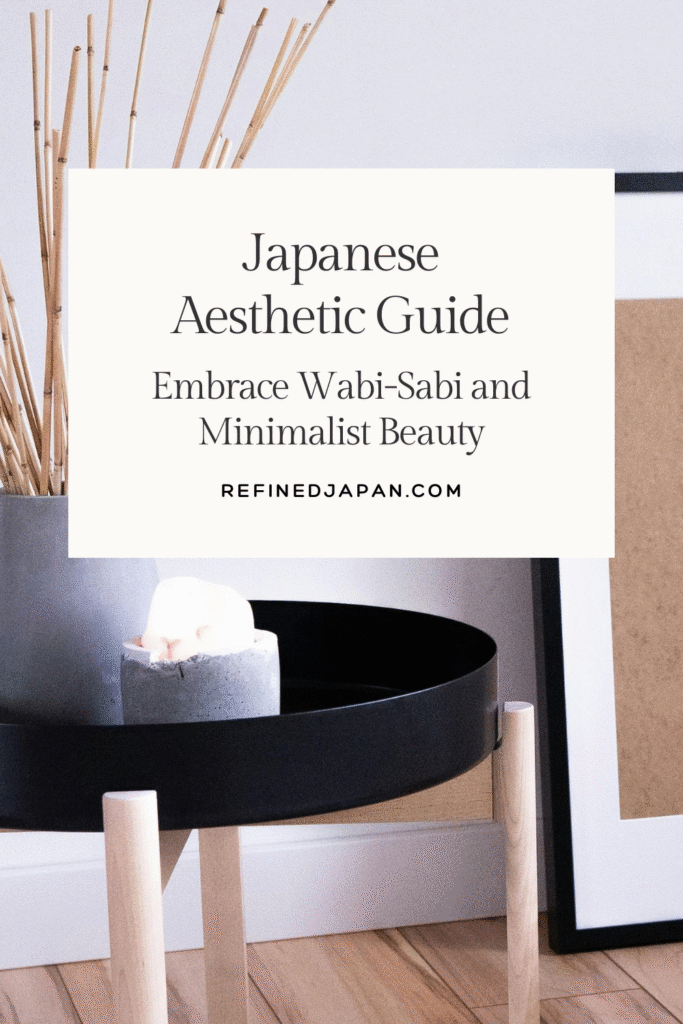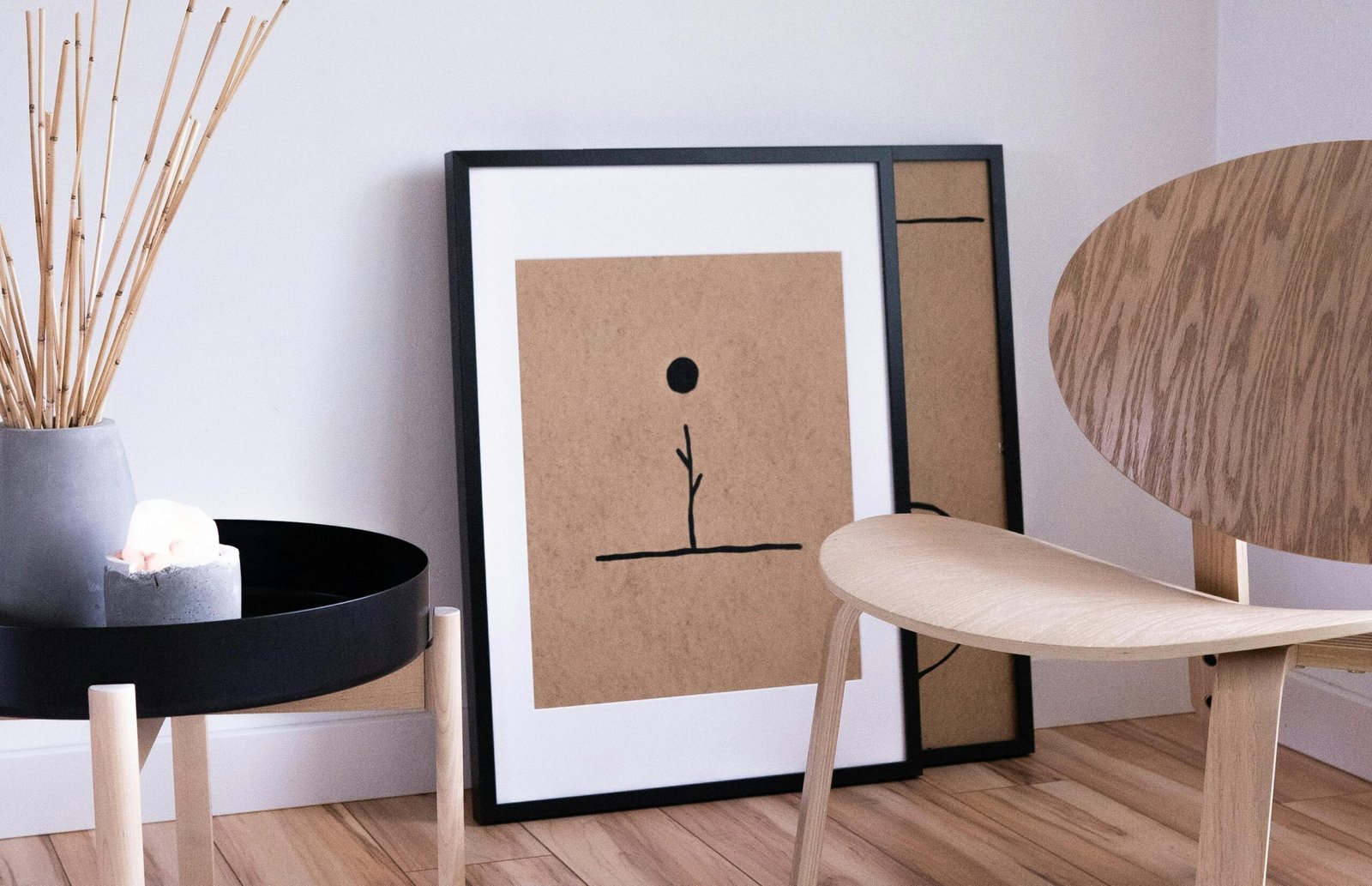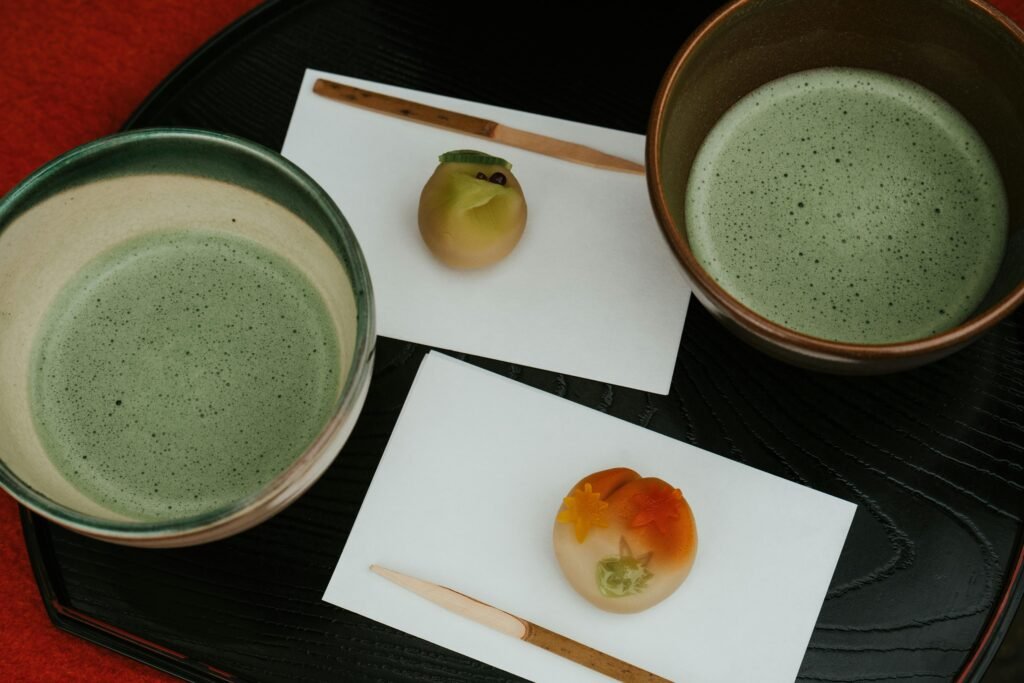Your home feels cluttered. Your mind feels noisy. And yet somehow, every time you scroll past photos of Japanese interiors—you know, those serene tatami rooms with nothing but a single flower in a vase—you think, “Why can’t my life feel like that?”
Here’s the thing: Japanese aesthetics isn’t just about looking minimalist or buying the right lamp. It’s a whole mindset—one that says beauty doesn’t need to shout, perfection is overrated, and sometimes the most gorgeous thing in the room is… empty space.
Yep, you read that right. Empty space.
In this guide, we’re diving into concepts like wabi-sabi (embrace the cracks!), ma (the art of nothing), and why Japanese minimalism feels so different from that all-white Scandi vibe. Whether you’re redesigning your apartment or just trying to find a bit more calm in your day, these ideas might just change how you see the world.
Let’s go.
What is Japanese Aesthetics?
Okay, so when people say “Japanese aesthetics,” they’re not just talking about Marie Kondo or those cute wooden benches on Instagram.
It’s way deeper than that.
At its core, Japanese aesthetics is a philosophy—a way of seeing beauty that’s subtle, emotional, and kind of poetic. Unlike Western design, which often loves bold statements and symmetry, Japanese aesthetics whispers instead of yelling.
Here are some key ideas you’ll keep bumping into:
1. Wabi-sabi (侘寂): Beauty in imperfection. That chipped teacup? It’s not broken—it’s lived in.
2. Shibui (渋い): Understated elegance. Think quiet sophistication, not flashy designer labels.
3. Ma (間): The space between things. Like the pause in a conversation that says more than words.
4. Yūgen (幽玄): That mysterious, hard-to-explain feeling when something moves you deeply. (You know, like when you see mist over mountains and suddenly feel very small and very alive.)
These aren’t just design buzzwords—they show up everywhere in Japanese culture. In how a room is arranged, how food is plated, even in how silence is appreciated.
Why It Feels So… Different
You know that feeling when you walk into a Japanese tea house and your shoulders just… drop?
That’s not by accident. Japanese aesthetics works differently because:
1. It’s not trying to be perfect. A mossy stone or faded fabric isn’t “old”—it’s telling a story.
2. It values change. Seasons shift, things wear down, and that’s all part of the beauty.
3. It’s felt, not just seen. You don’t just look at it—you experience it.
Imagine this: You’re sitting in a quiet room. Sunlight filters through rice paper screens. You’re holding a handmade teacup that’s slightly lopsided. Nothing matches perfectly, but somehow… everything just works.
That’s Japanese aesthetics in a nutshell.
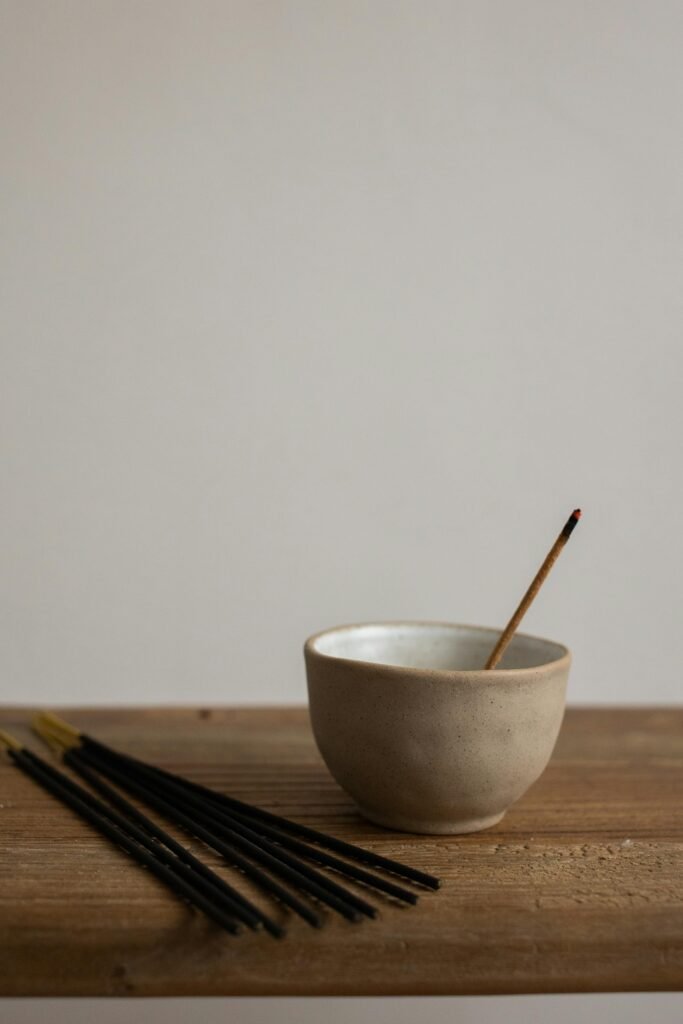
Two Big Influences: Nature and Zen
Two elements shape Japanese aesthetics more than anything:
1. Nature
In Japan, nature isn’t just scenery—it’s part of the design. Homes are built to invite in light, air, rain. Gardens aren’t meant to look “perfect”—they’re meant to reflect the beauty of the wild. Flowers wilt. Leaves fall. And that’s the point.
2. Zen Buddhism
Zen teaches you to be present, let go of control, and embrace simplicity. That’s why traditional Japanese spaces feel so open and uncluttered. A rock garden isn’t random—it’s a meditation. A single flower in a vase isn’t lonely—it’s intentional.
Together, nature and Zen create spaces (and mindsets) that feel grounded, peaceful, and refreshingly unhurried.
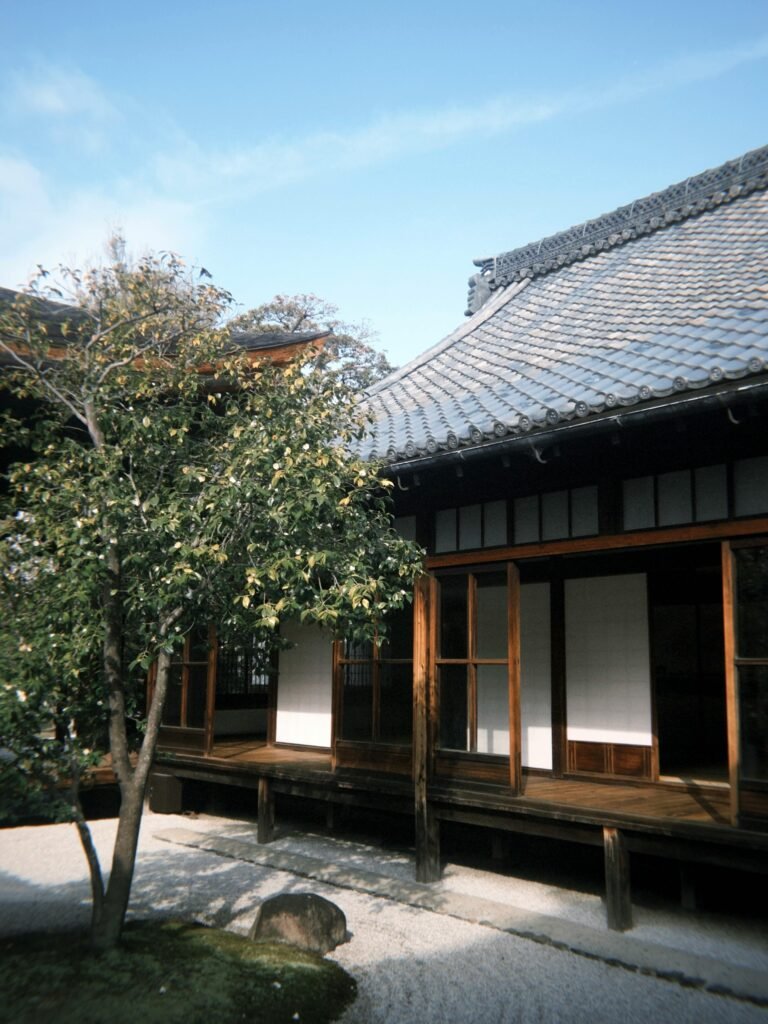
Wabi-Sabi: Finding Beauty in Imperfection
Wabi-sabi (侘び寂び) is one of the most well-known—and most misunderstood—Japanese aesthetic principles.
Alright, let’s talk about wabi-sabi—probably the most famous (and most misunderstood) concept in Japanese aesthetics.
People love throwing this term around, but what does it actually mean?
Here’s the simplest way I can put it:
Wabi = simplicity, quietness, a little bit of loneliness (in a good way)
Sabi = the beauty that comes with age, wear, and the passage of time
Put them together, and you get: Finding beauty in things that are imperfect, impermanent, and incomplete.
What Wabi-Sabi Looks Like
Think about:
– A ceramic bowl with an uneven glaze and a small crack running through it
– A wooden table that’s been worn smooth by decades of use
– A handwritten letter with smudged ink
– That quiet, rainy Sunday when you just… exist
Wabi-sabi isn’t Instagram-perfect. It’s real-perfect.
And honestly? In a world obsessed with filters and flawless aesthetics, wabi-sabi feels like a breath of fresh air.
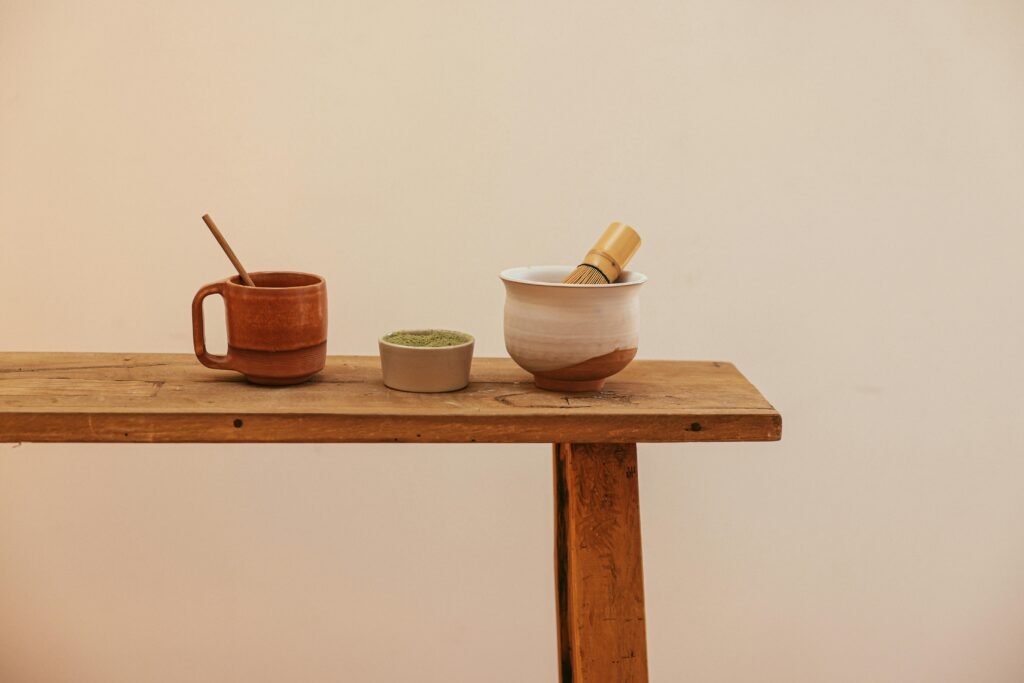
Wabi-Sabi vs. “Perfectionism”
In modern consumer culture, we’re conditioned to chase perfection.
Scratched furniture? Replace it.
Faded jeans? Toss them.
A phone with a cracked screen? Upgrade immediately.
Everything has to look shiny, flawless, new.
But wabi-sabi offers a completely different perspective.
That scratch tells a story.
That fade shows character.
There’s even a traditional art form called kintsugi—repairing broken pottery with gold—because the cracks are part of the object’s history, not something to hide.
It’s a subtle but powerful shift in mindset: Imperfection isn’t failure. It’s life.
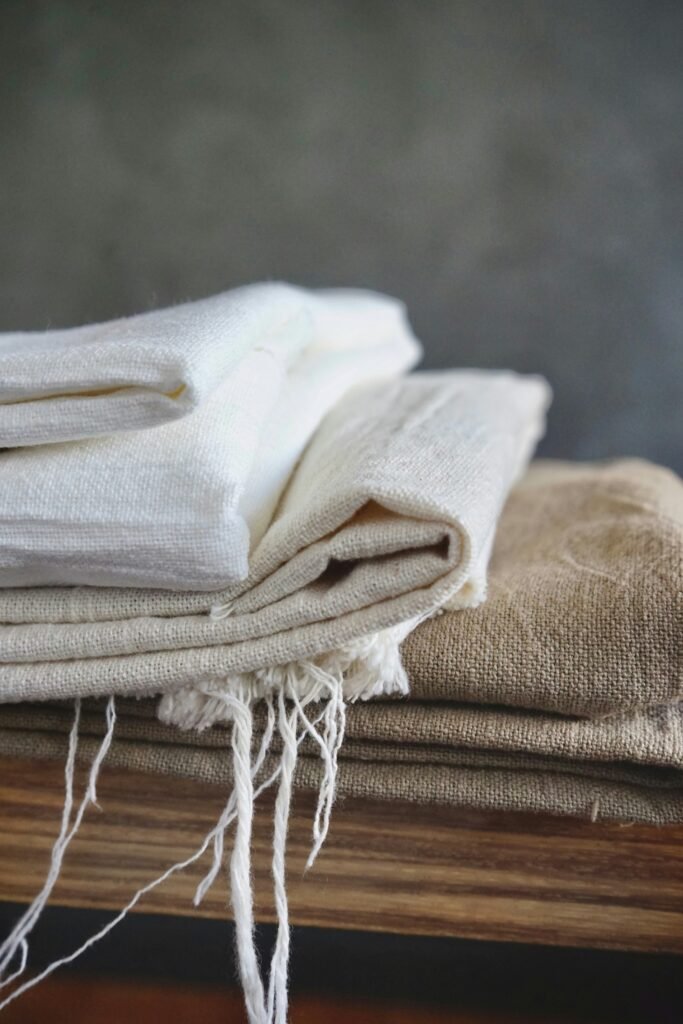
How to Invite Wabi-Sabi Into Your Life
You don’t need to fly to Kyoto or buy expensive artisan pottery. Here’s how to start:
1. Choose handmade over mass-produced. Look for items with texture, irregularity, a human touch.
2. Don’t toss things just because they’re old. That faded cushion? It’s lived with you. That’s worth something.
3. Simplify, but stay warm. Wabi-sabi isn’t cold minimalism—it’s cosy minimalism.
4. Spend time in nature. Watch how things change, age, grow. That’s wabi-sabi in action.
Wabi-sabi teaches you to slow down and appreciate what’s already there. It’s not about getting more—it’s about seeing differently.
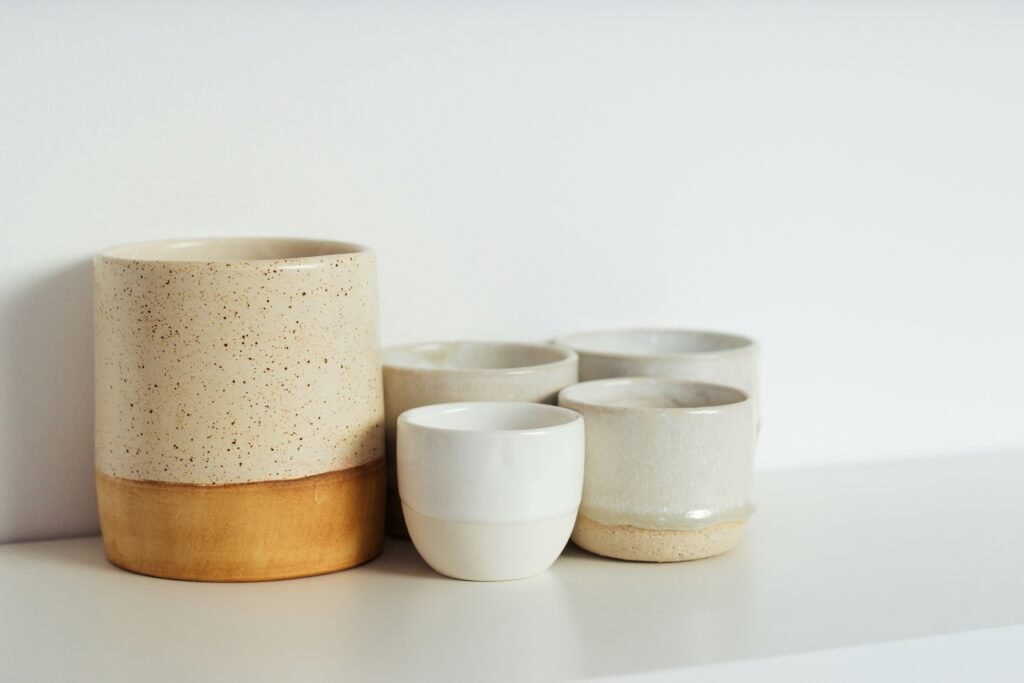
Japanese Minimalism: It’s Not What You Think
When most people hear “minimalism,” they picture all-white walls, sleek furniture, and a vibe that’s a little… sterile.
But Japanese minimalism? Completely different energy.
Let’s break it down:
Western minimalism tends to focus on:
1. Clean lines, symmetry, and modern materials
2. “Less is more” as a design rule
3. A very intentional (sometimes clinical) aesthetic
Japanese minimalism is rooted in:
1. Zen philosophy and wabi-sabi
2. Natural materials like wood, paper, and clay
3. Emptiness as potential, not just absence
Here’s an example: Imagine a sleek white apartment with nothing on the walls versus a tatami room with soft light filtering through shoji screens, one ikebana arrangement, and the smell of fresh tatami mats.
Both are minimalist. Both are beautiful. But they evoke completely different emotions—one feels modern and crisp, the other warm and grounded.
Why Minimalism Matters in Japan
Japanese minimalism isn’t just a trend—it’s cultural.
In Japan, space is precious (literally—homes are often tiny). So every object matters. Every corner is intentional. And empty space isn’t wasted—it’s breathing room.
This connects to:
1. Ma (間): The meaningful space between things
2. Harmony with nature: Bringing the outside in
3. Mindfulness: Living with only what you truly need or love
4. Impermanence: Accepting that nothing lasts forever, so why clutter your life?
It’s minimalism with soul.

Everyday Minimalism Tips
Want to bring a bit of that calm into your daily life?
Try this:
1. Declutter with intention. Don’t just “get rid of stuff”—ask, “Does this bring me peace or purpose?”
2. Use natural materials. Wood, linen, clay—things that age beautifully.
3. Create space for stillness. Not every corner needs to be “decorated.”
4. Go seasonal. A single branch in spring. A stone in autumn. Let your space breathe with the seasons.
5. Multipurpose everything. Futons, nesting bowls, folding furniture—Japanese design loves flexibility.
Even just tidying your tea corner or leaving one wall completely bare can shift the whole vibe of your space.
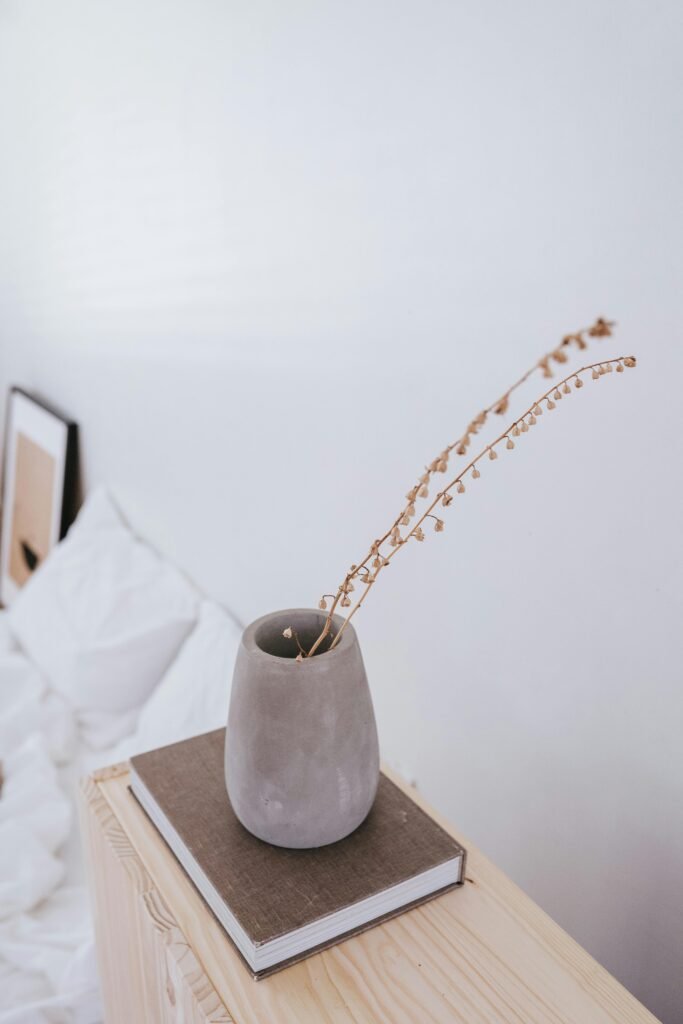
Japanese Design Principles in Architecture
Now let’s talk buildings.
Japanese architecture has this magical ability to make you feel calm the moment you step inside—even if you can’t quite explain why.
Space, Light, and “Ma”(間)
One of the coolest (and hardest to translate) concepts in Japanese architecture is ma—the space in between.
It’s not emptiness. It’s potential.
It’s the pause between words. The gap in a melody. The hallway between rooms that makes you slow down and breathe.
In traditional Japanese homes, you’ll notice:
– Sliding shoji doors that create flexible, flowing spaces
– Raised floors that define areas without walls
– Wide eaves that blur the line between indoors and outdoors
– Natural light that shifts throughout the day
Ma isn’t just visual—it’s experiential. It makes the space feel alive.
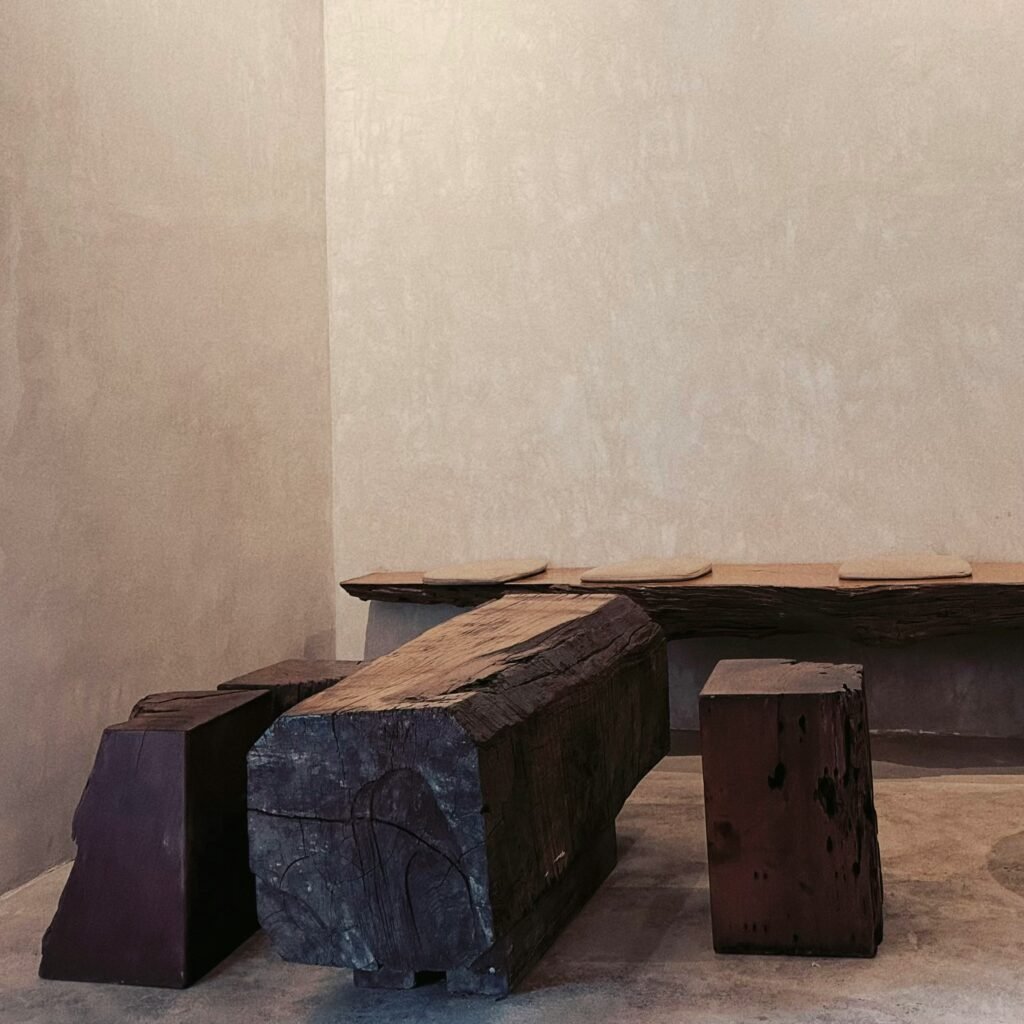
Natural Materials FTW
Japanese architecture embraces materials that age, weather, and change over time.
Common elements include:
1. Wood (like hinoki or cedar) that gets richer with age
2. Tatami mats made of rice straw, with a soft, earthy scent
3. Washi paper for lamps and screens—it diffuses light so beautifully
4. Stone and earth walls for texture and grounding
Nothing’s trying to look “new forever.” Instead, there’s an appreciation for grain, texture, and the marks of time. (Hello again, wabi-sabi.)
And here’s the clever part: many traditional materials are designed to be repaired, not replaced. Tatami mats can be flipped or re-covered. Shoji screens can have individual panels replaced. It’s sustainability meets beauty—honouring the whole while tending to the parts that wear.
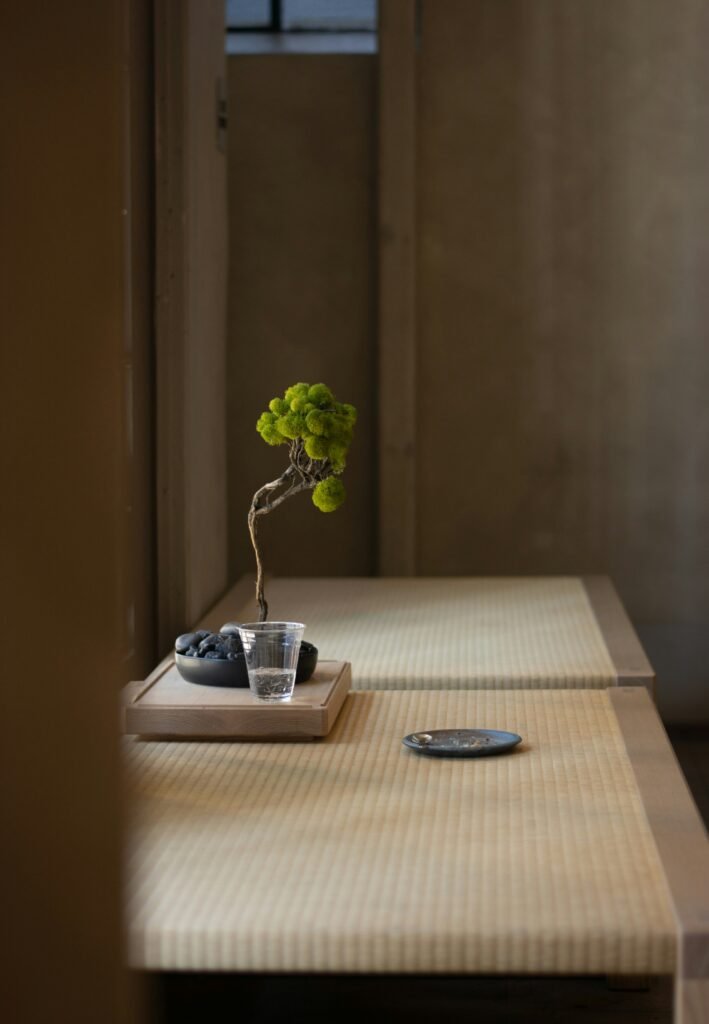
Modern Japanese Architecture
Japanese principles didn’t stay in the past—they’ve inspired architects worldwide.
A few standouts:
1. Tadao Ando’s concrete temples: All about light, shadow, and ma. His buildings feel like meditation in physical form.
2. Kengo Kuma’s wooden facades: A modern return to natural materials, arranged in rhythm and harmony.
3. SANAA’s glass structures: Blurring boundaries between inside and outside, public and private.
Even outside Japan, you’ll see:
– Homes built around courtyards for air and seasonal light
– Minimalist interiors with low furniture and soft palettes
– Urban buildings using wood, soft lighting, and intentional silence
Japanese-inspired architecture isn’t about copying—it’s about translating calm, nature, and space into a modern context.
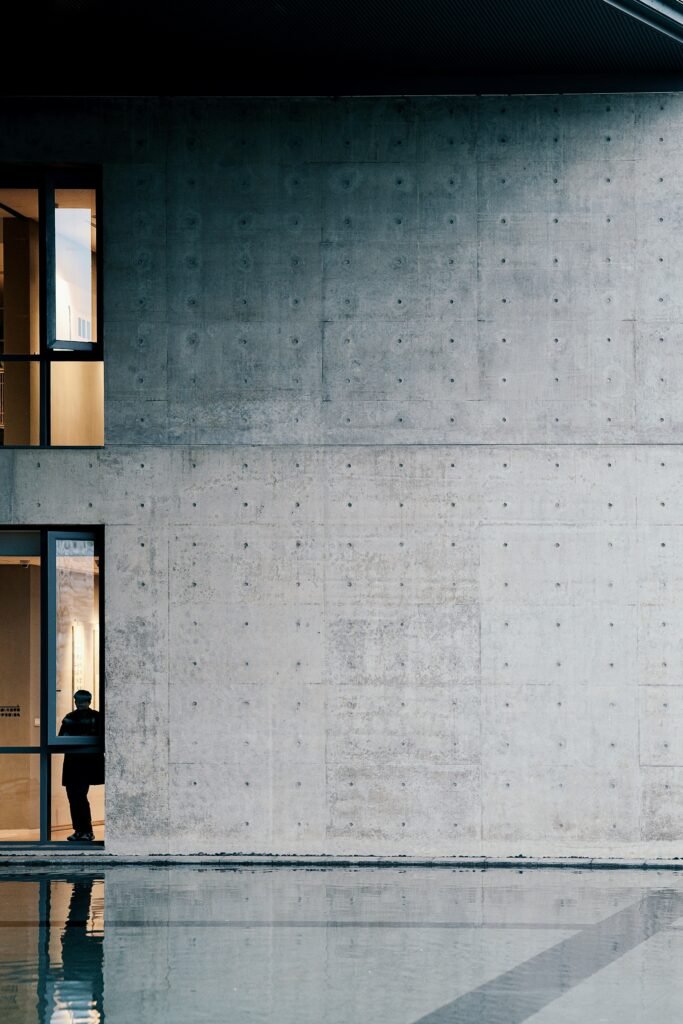
Where to Find Inspiration
Want to go deeper? Here’s where to look:
Pinterest:
Search “wabi-sabi home,” “shibui interiors,” or “Japanese minimalism”
Books:
1. Wabi Sabi: Japanese Wisdom for a Perfectly Imperfect Life by Beth Kempton
2. In Praise of Shadows by Jun’ichirō Tanizaki
3. Japan Style by Geeta Mehta and Kimie Tada
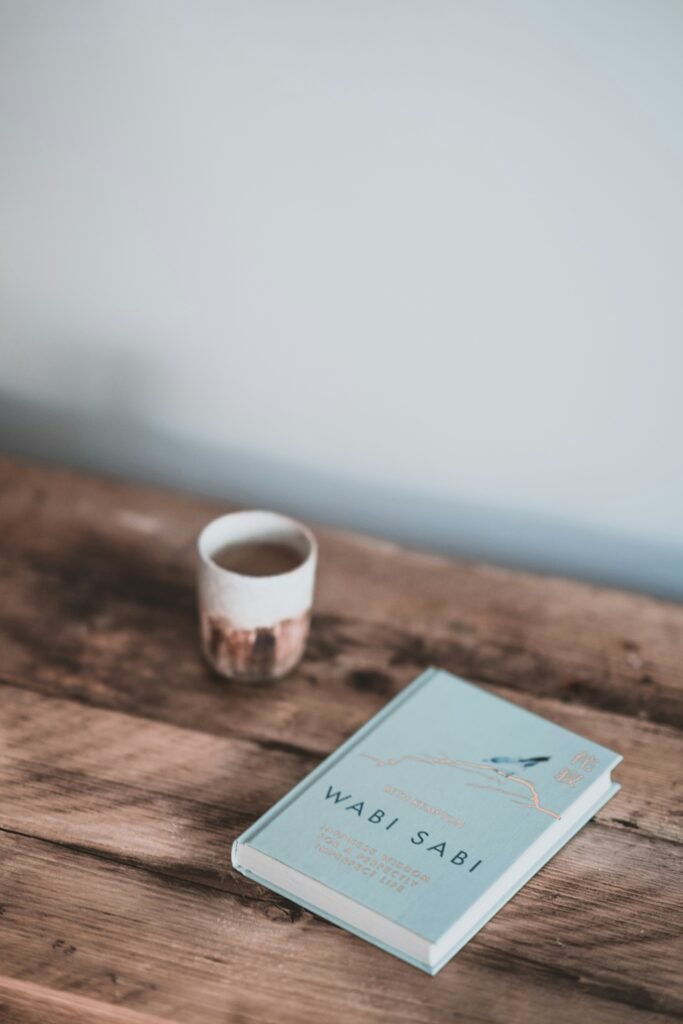
Japanese Brands That Embody These Values:
If you’re looking for pieces that reflect this philosophy, here are some brands worth exploring:
1. MUJI – Simplicity and functionality in everyday essentials
2. Maruni – Timeless wooden furniture blending craftsmanship with modern design
3. Sfera – Elegant, crafted homeware with quiet sophistication
4. Kinto – Tableware and lifestyle goods inspired by slow, mindful living
5. Ippodo Tea – Traditional tea culture, beautifully presented
These brands don’t just sell products—they offer a way of living rooted in mindfulness, quality, and beauty.
Travel:
If you can, visit Kyoto or Kanazawa. Walk through a Zen garden. Sit in a tea house. Feel it. There’s something about experiencing these spaces in person that photos just can’t capture.
Surround yourself—digitally or physically—with visuals and ideas that slow you down and inspire a more thoughtful rhythm.
Living with Subtlety and Intention
Japanese aesthetics aren’t just about style. They’re about a mindset.
A way of being that values quiet over loud, depth over surface, and presence over perfection.
In a world that’s constantly rushing, shouting, and selling you more stuff, embracing wabi-sabi, ma, or Japanese minimalism can feel like finally exhaling.
It’s about learning to:
– Notice the beauty in worn wood or soft shadows
– Appreciate the elegance of an empty space
– Find comfort in the imperfect and incomplete
Whether you’re rearranging your living room, simplifying your morning routine, or just taking a slower walk home—Japanese aesthetics offer gentle guidance.
It’s not about doing more. It’s about feeling more deeply through less.
So next time you sip tea from a handmade cup, or watch the light move across your floor, take a moment. Notice it. Enjoy it.
That quiet joy? That’s Japanese beauty at work.
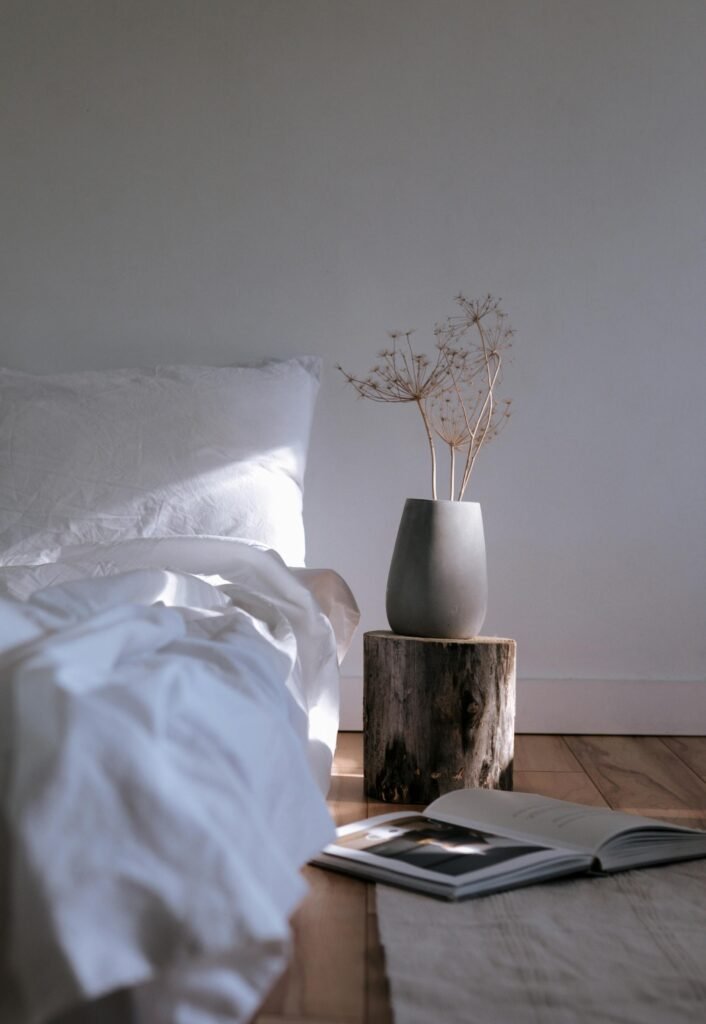
Bookmark this curated guide on Pinterest

